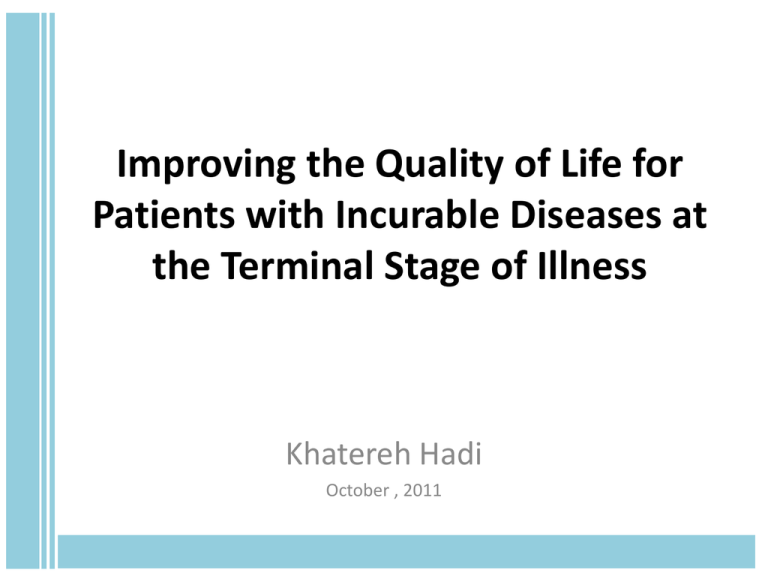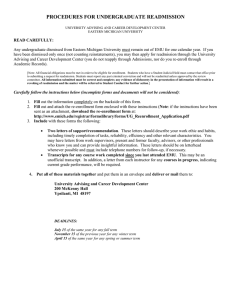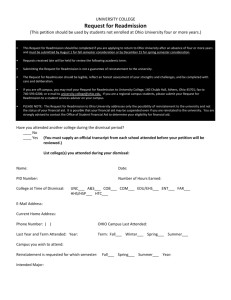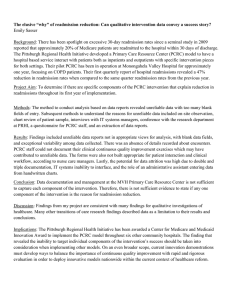Hadi-slides
advertisement

Improving the Quality of Life for Patients with Incurable Diseases at the Terminal Stage of Illness Khatereh Hadi October , 2011 Readmission 20% of hospital discharges are followed by readmission within 30 days….. Readmissions usually stem from: - Discontinuity and fragmentation of care - Lack of standards - Disorganized action Readmission Outcomes • High readmission rate is considered as low hospital quality • No reimbursement for readmissions less than 30 days • Increasing costs Readmission of patients with incurable diseases • Patients with incurable diseases are frequently readmitted • Reasons: - Declining quality of life - No improvement in disease symptoms - Demanding situation for families - Lack of coordination between caregivers Who are patients with incurable diseases? • People with cancer • People with organ failure • Frail older people Each category has different types of physical decline. When do they die? 1. Cancer: Long, high function plateau followed by decline 2. Organ failure: Punctuated decline with acute exacerbation 3. Frail older people: Slow progressive demise Preferred place of death for terminally ill people Over 50% of them prefer to die at home IF IT IS POSSIBLE… Less than one third of those succeed in that Studies are needed to improve the quality of life at home so as to decrease readmission rates Hospices According to Medicare regulation: You can go to Hospice after discharging from hospital IF life expectancy is 6 months or less Except for cancers, it is hard to predict the death time. Only 20% die at Hospices Readmission Low quality of care and life Home Discharge from Hospital Hospices The Sea Inside - A 2004 Film A real life story - Unable to move for 29 years after a diving accident, spending his life on a bed, decided to commit suicide with dignity. Literature on considering home as preferred place for death • No negative effect on quality of life • Positive influence in terms of - Patients’ satisfaction - Physical and psychological aspects - Reduction in readmission rates Home does not improve the quality by itself: It provides a good opportunity and a convenient place to improve the quality of life by touches that are important at the end of life What do terminally ill patients want? • • • • • Support Independence Not being a burden Medical care Peace What are their basic needs? To move sometimes… To eat always… Medical Care… Communication and entertainment… Aware Home Inventions in chronic disease management by home technologies • Facilitating communication • Coordination of activities between caregivers • Independent life Beds as “the home” What is going on? • Limited activities • Limited motion • Medical care • Different types of equipment • Basic needs Beds • Can we improve the quality of life by making patients more comfortable? • Do these patients need a special kind of bed? • What special features are needed? Every person with a incurable illness has a right to good end-of-life care.











